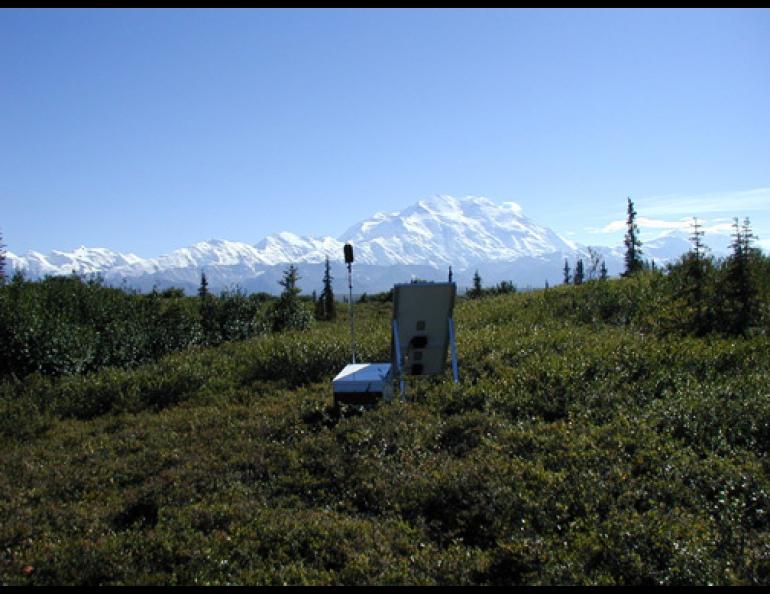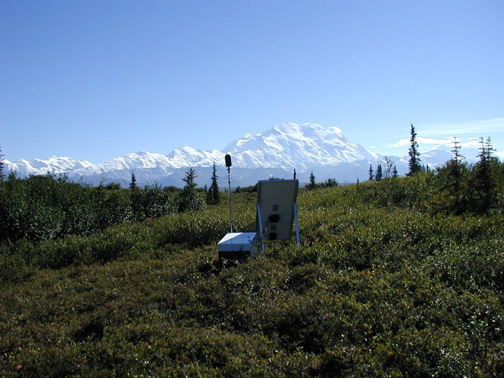
Capturing the Sounds of Denali Park
Backcountry hikers expect peace and quiet in Denali National Park, but they dont always get it. Some hikers at Denali have been telling park managers about excessive noise, especially from flightseeing aircraft.
The noise is something like camping on a flight path, wrote one backpacker, who sent a visitors comment form to Joe Van Horn, backcountry ranger at Denali National Park.
I think its probably the most common negative report we get back, other than mosquitoes or rain, Van Horn said. Ive been here for 23 years and I think the increase in aircraft-related noise is the single biggest change to the parks wilderness character that Ive noticed.
The National Park Service has recognized the intrusive nature of human-caused noise, and a Denali ecologist is now recording the sounds of the park. The Park Service refers to this resource as the soundscape.
Shan Burson, head of Denalis sound-monitoring program, has set up sensitive microphones in the Ruth Amphitheater, at Denali base camp on the Kahiltna Glacier, and at Wonder Lake, among other areas. He has collected 10,500 hours of sound, including bird songs, the buzz of aircraft, the roar of glacial rivers, and still, quiet moments when his equipment measures nothing at all.
The Denali program is part of a nationwide census of sounds in national parks. Managers realize that while parks look the same as they did years ago, they have become much noisier.
Burson has recorded the sounds of Denali for two years, working with equipment he designed with the help of others, such as Skip Ambrose, who developed recorders to measure sonic booms and other aircraft noise around peregrine falcon nests in Alaska, and Mike Donaldson of Far North Aquatics in Fairbanks. Ambrose works at the National Park Service Soundscape Program Center in Fort Collins, Colorado.
To capture the sounds of an area, Burson sets up a microphone attached by a metal pole to a box that contains a sound-level meter, batteries and a laptop computer. He aims a solar panel at the sun to help power the equipment, and he has insulated one of his boxes so it works all winter using the heat of the laptop. Burson has three summer units and one winter unit, which he recently set up near the abandoned Stampede Mine on the north side of the park.
Using a microphone sensitive to sounds within normal hearing range, Bursons recorders turn themselves on every five minutes to sample the soundscape. His digital recordings have captured the sounds of the seasonsbirds singing and mosquitoes humming in June and July, planes landing on glaciers during the climbing season, snowmachines whining in winter, and ravens calling all year long.
Burson is inventorying the current sound levels at the park so he can compare them with future readings. He has recorded sound on the park road as well. Burson also uses his recordings for a research project on snowmachine use. Two winters ago, Burson set up the insulated microphone system in the Dunkle Hills, a popular snowmachining area in the park near Cantwell.
Burson is now analyzing two years of data from sites on the south end of the park, and he will focus on the north end during the next two years. After he listens to the sounds of the south side of the park, he will share the results with park staff members who are writing up new management goals for the backcountry. The preservation of peace and quiet will be part of their new plan.





